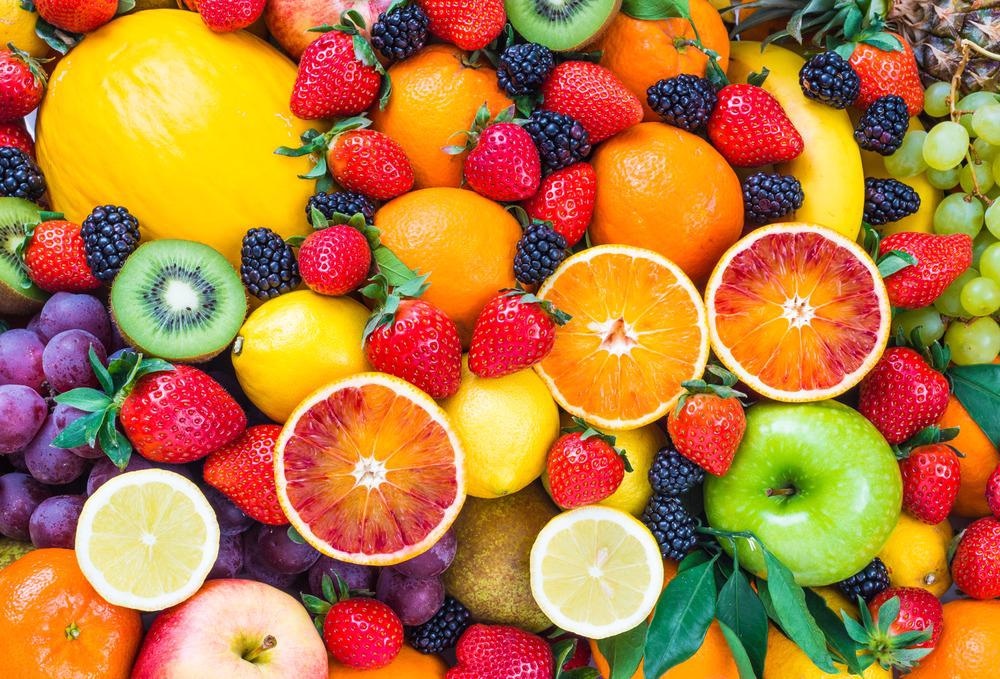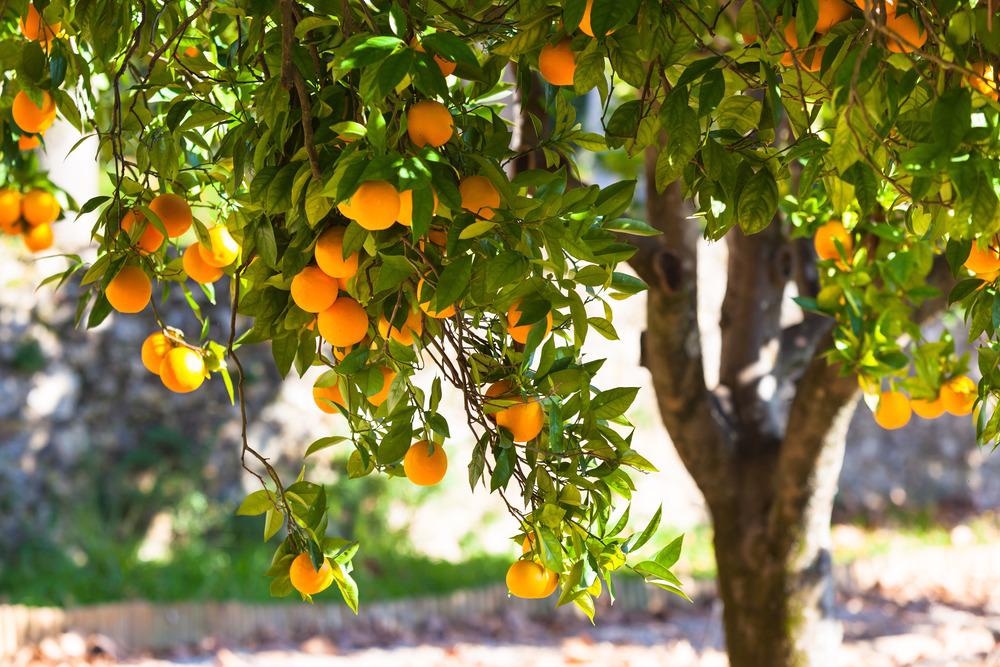The continual and rapid growth in the global population has substantially increased the demand for food. However, global warming has led to climatic changes that have affected agricultural production. Scientists have stated that large quantities of fruits and vegetables are wasted owing to poor post-harvest processes. In the last few decades, nanotechnology has been applied in various fields of science, including agriculture, to enhance agriculture sustainability and reduce food wastage.

Image Credit: leonori/Shutterstock.com
The main aim of the novel technologies is to increase agricultural production and reduce food waste. Scientists have identified several areas that could help minimize the problems associated with food security. These include soil improvement, secure water use, agricultural efficiency via nanoformulations, and effective distribution of food in stores.
Nano-based Technologies and Fruit Cultivation
One of the most widely investigated and developed factors related to fruit cultivation is nanofertilizers. Nanofertilizers can enhance vegetative growth, improve reproductive growth and flowering, and ultimately enhance productivity, fruit quality and augment the shelf-life. The application of nanotechnology in fruit cultivation has substantially reduced fruit wastage.
Farmers spray specific nanomaterials such as zinc, boron and chitosan at a very low concentration on fruit trees at varied time intervals. These nanomaterials act as growth stimulants. Similarly, scientists have designed nanocomposites, such as ZnFeMnB (zinc, iron, manganese, boron), NPKMg (nitrogen, phosphorus, potassium, magnesium), and calcite, which have significantly improved the vegetative and reproductive traits of fruit trees like strawberry, pomegranate, mango, date, and grape.
Nanofertilizers
Nanoparticles with a higher surface-to-volume ratio and greater reactivity serve as nanofertilizers with increased nutrient solubility, diffusion, and improved bioavailability. Nanofertilizers are nutrient carriers at a nano-scale dimension. They can carry nutrient ions due to their large surface-to-volume area and deliver them in a controlled manner according to the need of a plant.
Several studies have revealed that the application of nano-NPK has significantly enhanced the growth rate and yield of date palms compared to conventional NPK fertilizers. Nano-NPK significantly improves nutrient use efficiency (NUE).
The use of foliar nanofertilizers of zinc as a single spray has enhanced the productivity and quality of pomegranate. Additionally, the application of nano-NPK has enhanced the growth performance of olive seedlings. These nanofertilizers have also improved enzyme (peroxidase and polyphenol oxidase) activities compared to conventional NPK.
According to a recent study, nanofertilizers not only improve the growth performance but also protect the environment by reducing added amounts of minerals. In a study, scientists have treated Washington Navel orange trees with conventional potassium (K2O) and nano- K2O, at different concentrations, during two successive seasons, i.e., 2015 and 2016. Although both the treatments decreased juice acidity, nano- K2O treatment alone improved the orange production.
Another study revealed that the application of zinc nanofertilizers enhanced vegetative growth parameters, nutrient content, and quality of seedless grapes.
Nanopesticides
Farmers use pesticides (insecticides, fungicides, and herbicides) extensively to protect against agricultural loss due to pathogen infestations. As overuse of chemical pesticides negatively affects the environment, researchers have developed nanopesticides that protect plants from harmful pathogens and are also eco-friendly.
Compared to conventional pesticides, nanopesticides reduce toxicity, enhance shelf-life and elevate the solubility of poorly water-soluble pesticides. These pesticides also assist the slow and controlled release of nutrients and agricultural chemicals to the plants. Some polysaccharides that are used to design nano-insecticides are chitosan, alginates, starch, and polyesters.
There are two types of nano-based pesticides, i.e., nanoparticles that directly protect plants against pathogens and nanoparticles which serve as effective carriers for existing pesticides. Some of the common nanopesticides effective against a wide spectrum of pests, with limited water, soils, and environmental pollution are silver, copper, and silicon oxide nanoparticles.
The zinc oxide nanoparticle pesticide is considered to be a double-edged weapon because it helps combat pests and is useful for plants’ development. Additionally, this nanoparticle is safe and easy to synthesize. Mostly, zinc oxide nanopesticides are used against pathogen Fusarium graminearum, which causes the apple rot disease.

Image Credit: dvoevnore/Shutterstock.com
Nanoparticles and Cloning of Fruit Trees
Scientists have revealed that sterilizing olive explants is a challenging task during in vitro cloning of olive species. In this context, silver nanoparticles were found to be effective in eliminating contamination in olives in vitro culture. Silver nanoparticles were able to inhibit bacterial, fungal, and viral pathogens in plants.
Researchers also studied the impact of carbon nanotubes (CNT) on date palm and reported that this nanomaterial increased all stages of in vitro propagation of date palm.
CNT is also associated with enhancements of germinated embryos and root numbers. Interestingly, studies have also shown that CNTs can increase the shoot multiplication rate as well as enhance pharmaconstituents, such as phenolic, flavonoid, and tannin, of the treated plant.
Nanotechnology and Postharvest Processing
Fruits are spoiled quickly due to their low pH and high moisture, organic and saccharides content. Researchers have stated that in developed countries, around 40% of food is wasted during trade and customer stages. However, in developing countries, more than 40% of food losses occur at the post-harvest stage.
Newly harvested food products are high in moisture content, making them prone to microbial attack. Scientists have applied nanotechnology to minimize post-harvest losses. They have designed edible nano-coatings that serve as a barrier to gas and moisture exchange, which prevents dehydration and decreases microbial growth. Additionally, a nano-based food packaging system with antimicrobial properties has effectively reduced the wastage of fruits. Scientists have designed metal nanocomposites using metallic nanoparticles, such as silver nanoparticles, and polymer films. They coated silver nanoparticles on polymeric materials, such as polyvinyl chloride (PVC) and polyethylene (PE).
The antimicrobial property of nanomaterials makes nano-based packaging systems more efficient than conventional packaging processes. Compared to traditional packaging, nano-SiOx/chitosan can effectively preserve Fuji apple fruit for a longer period. Similarly, packaging material containing zinc oxide nanomaterials decrease microbial growth rate in orange juice. It also enhances the shelf-life up to twenty-eight days without developing any adverse effects. Additionally, researchers have also developed nanobiosensors to monitor pathogenic infection in fruits.
Continue reading: Nanoparticles in Soil; What is the Risk?
References and Future Reading
Neme, K. et al. (2021). Application of nanotechnology in agriculture, postharvest loss reduction and food processing: food security implication and challenges. Heliyon. 7(12). e08539. https://doi.org/10.1016/j.heliyon.2021.e08539
Bhusare, S.M. and Kadam, S. V. (2021) Applications of Nanotechnology in Fruits and Vegetables. Food and Agriculture Spectrum Journal. 2(2). pp. 231-6
Zahedi, S.M. et al. (2020) The use of nanotechnology to increase quality and yield of fruit crops. Journal of the Science of Food and Agriculture. 100(1). pp. 25-31. doi: 10.1002/jsfa.10004. https://doi.org/10.1002/jsfa.10004
Mustafa, S.N. and Zaied, S.N. (2019) Nano-technology applications in fruit trees orchards. Journal of Innovations in Pharmaceutical and Biological Sciences. 6 (3). pp. 36-45, https://jipbs.com/index.php/journal
Disclaimer: The views expressed here are those of the author expressed in their private capacity and do not necessarily represent the views of AZoM.com Limited T/A AZoNetwork the owner and operator of this website. This disclaimer forms part of the Terms and conditions of use of this website.